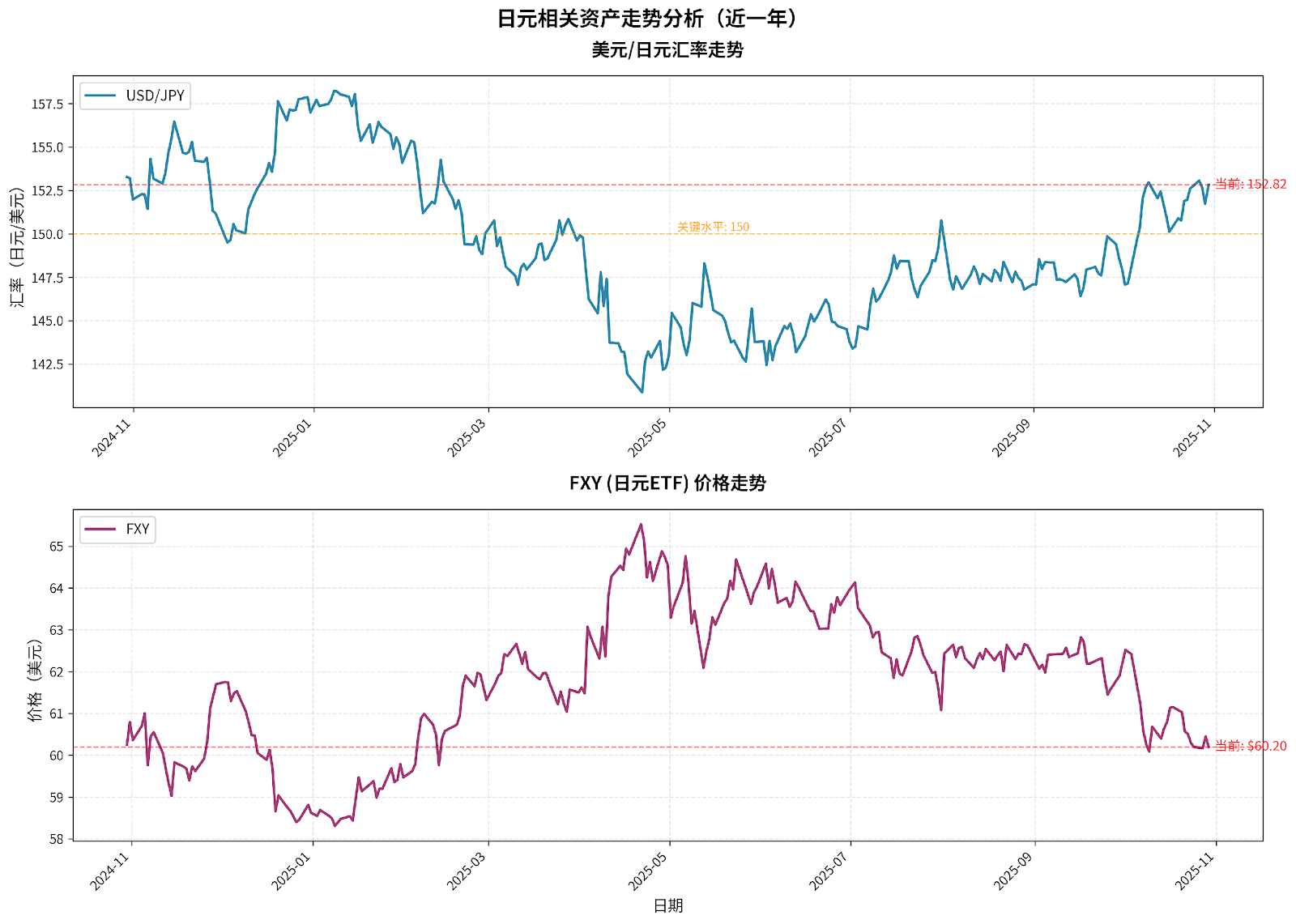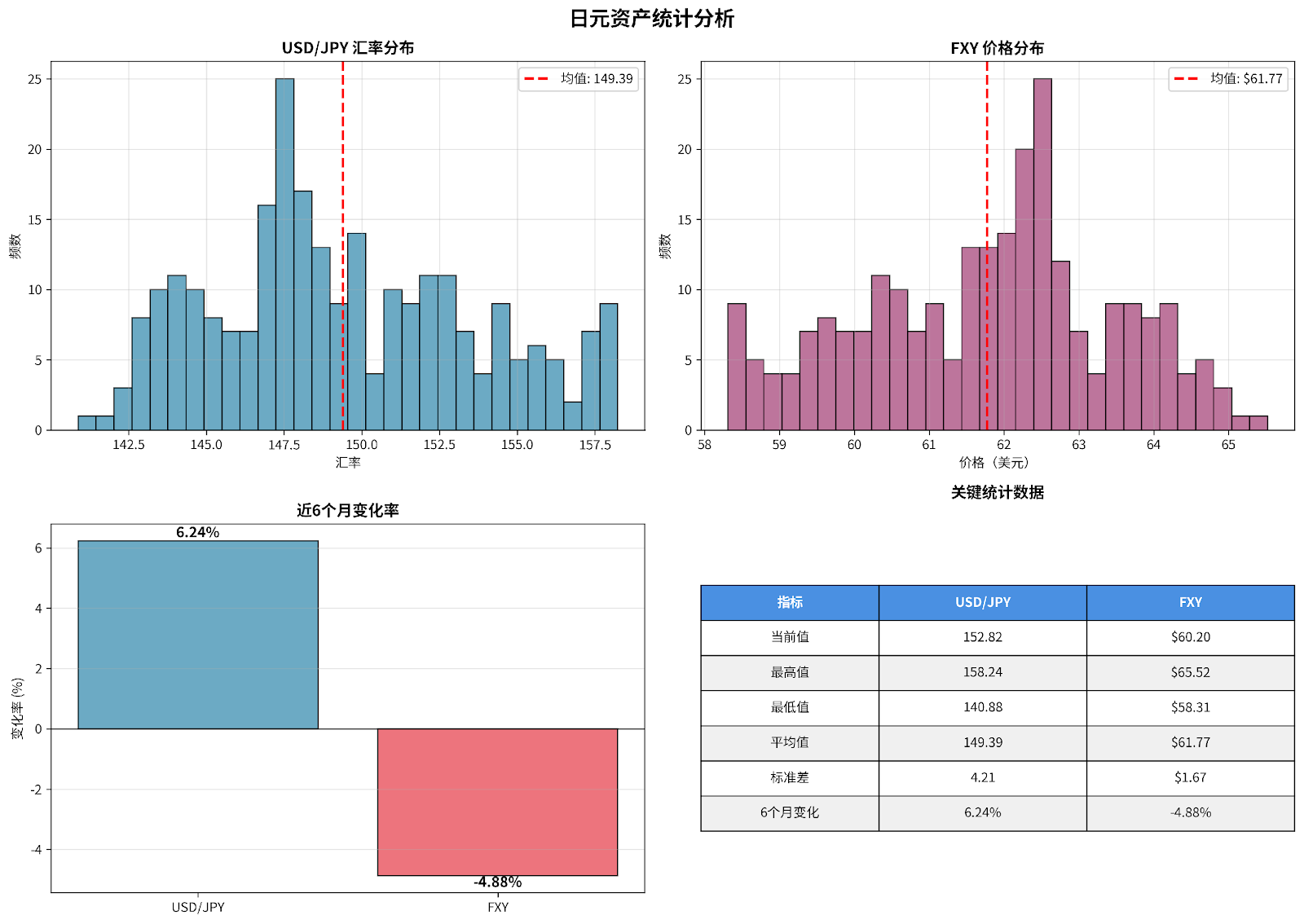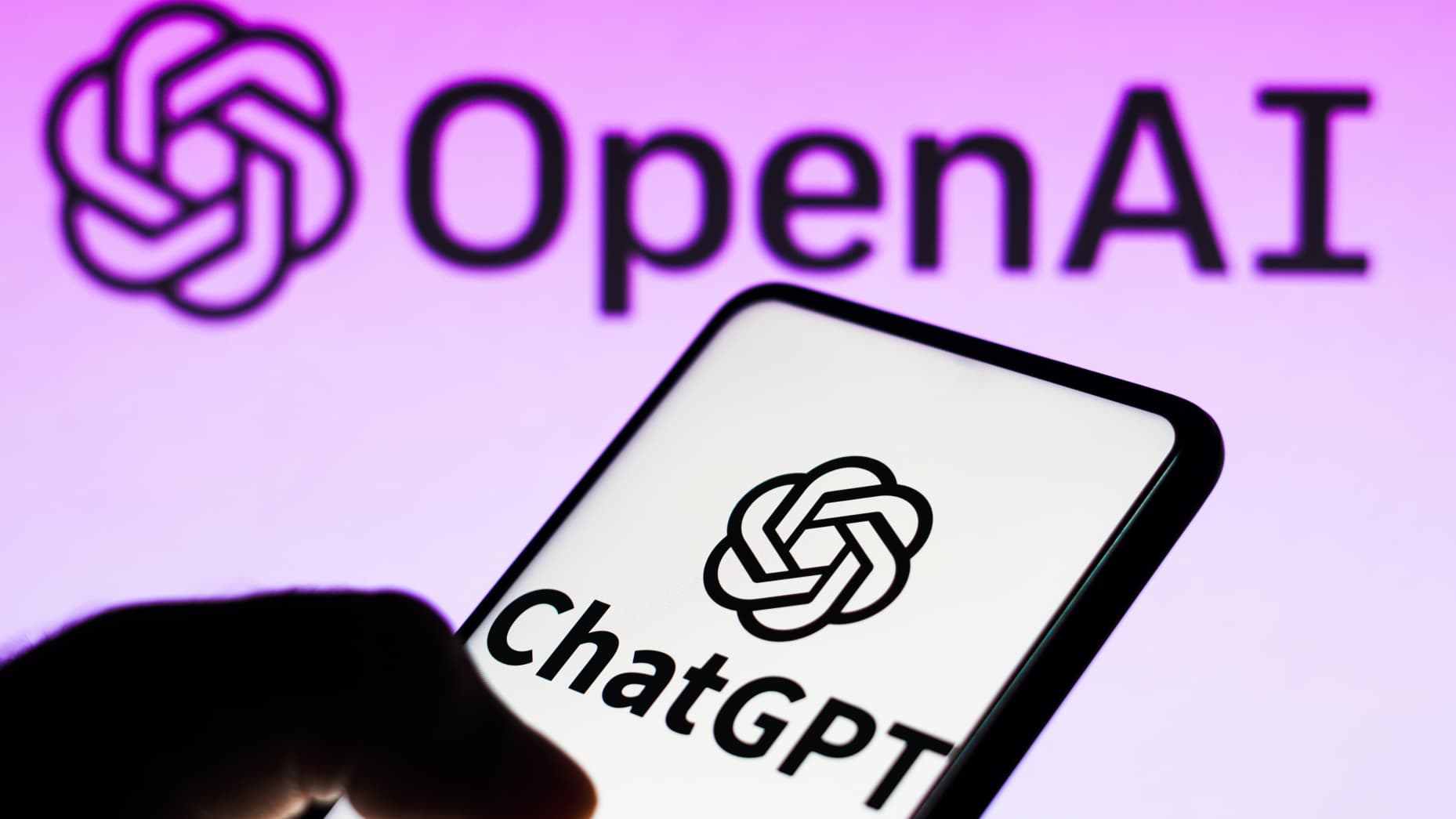市场资讯及洞察
.jpg)
日本通胀走势:核心与服务通胀放缓迹象
最新数据显示,日本核心CPI涨幅正逐步放缓。2025年9月核心CPI(除生鲜食品)同比上涨2.9%,略高于央行2%的目标,但涨幅仅比8月的2.7%略有扩大。反映更基础价格走势的核心核心通胀(剔除生鲜和能源)同比上涨2.4%,已连续第二个月放缓(8月为2.5%)。物价结构上,“输入型”通胀压力有所缓解:虽然能源价格在9月再度上涨,食品(除生鲜)价格仍大幅攀升,但服务业价格涨幅相对温和,远低于商品价格的涨幅。这表明企业仅在逐步地将更高的成本转嫁给消费者,服务通胀仍温和。
整体而言,日本通胀水平虽仍高于目标,但已呈现一定放缓态势。日本央行预期未来通胀将进一步走低:其预测2025财年核心通胀可能降至目标以下。通胀的这一降温趋势,为央行维持政策宽松提供了空间,但也考验着其退出宽松的时机拿捏。
利率政策与YCC操作:宽松基调下的渐进调整
日本央行在过去一年开始谨慎迈出政策正常化步伐。2024年3月,央行近十多年来首次加息,结束了持续多年的负利率政策(NIR)和长期实施的收益率曲线控制(YCC)框架。截至目前,央行将短期政策利率提升至0.5%(2025年1月调整)。同时,针对长期利率的YCC也逐步放松:央行已不再对10年期国债收益率设定严格上限,此前设定的0%目标收益率和1%的参考上限已转为弹性区间。
尽管名义上退出了YCC,央行仍每月购入约6万亿日元国债,与过去购债规模大致相当,并表示若长期利率波动过快可随时加码购买。这意味着央行在实质上保留了调控长端利率的工具,以避免利率快速上行冲击市场。除此之外,央行也停止了ETF和REIT的新购入,并计划逐步缩减公司债持仓,表明非常规宽松措施正有序退出。
不过总体来看,日本货币政策相较欧美仍属高度宽松:即便经过多次微调,目前政策利率仅0.5%,实际利率仍为负值,央行也反复强调将“维持宽松的金融环境一段时间”。在通胀中期展望尚未稳稳达到2%且外部风险犹存的情况下,央行在政策正常化上保持耐心,倾向于渐进而谨慎的调整步伐,以维持金融市场稳定。
关注经济基本面:工资、消费与出口的权衡
日本央行政策立场的重点日益转向国内基本面,尤其是工资和消费。在央行看来,实现持续且稳定的2%通胀需要内需拉动:这包括企业提高薪资、居民增加消费。近一年日本工资增速可谓近几十年未见。2024年春季“大幅度”加薪潮使合同工资涨幅创下33年来最高纪录,企业夏季奖金也因利润丰厚而上升。央行官员预计,劳动力短缺背景下工资有望继续稳步上行。
不断增长的薪资使居民收入改善,支撑了家庭消费,即使食品等必需品涨价导致部分消费更趋节俭,整体私人消费依然表现出韧性。这对央行而言是积极信号:服务价格只有在工资推动下稳步上涨,2%通胀目标才能可持续地实现。因此,植根于内需的工资-物价螺旋形成是央行判断退出宽松的关键前提。正如植田和男行长所言,在看到由国内需求和工资增长驱动的持续通胀前,央行不会贸然加息收紧。
与此同时,央行也密切关注外部环境对基本面的拖累。出口方面,今年以来日本对美出口受新贸易关税影响一度前置激增后回落,总体趋势趋于平淡。海外经济放缓和美国贸易政策的不确定性,可能削弱日本企业盈利并影响其提薪意愿。植田行长警告称,如果海外经济和贸易政策前景高度不确定,企业或将更加着眼削减成本,减少涨价利润用于提高工资的努力。这意味着外需走弱可能中断国内“盈利–工资–消费”良性循环。
目前来看,日本企业整体利润仍维持高位(部分受惠于此前日元贬值和提价),为应对关税冲击提供了一定缓冲。不过央行在政策上依然小心翼翼:在美国关税冲击全面显现前,尽量避免过快加息,以防止外部逆风危及日本来之不易的经济复苏和物价上行势头。因此,在工资与消费的内生动力和出口与海外风险之间取得平衡,成为日本央行政策制定中的微妙课题。
政策节奏对比:日本与美联储、欧洲央行分化
同其他主要央行相比,日本央行的政策正常化节奏明显滞后,当前所处周期亦截然不同。美联储早在2022-2023年就大幅加息至5%以上,应对高通胀;而进入2024-2025年,美国通胀回落,经济增长放缓,美联储已转向降息周期。今年以来美联储多次下调政策利率。就在近日的决策中,美联储再次降息(尽管投票存在分歧),鲍威尔主席亦指出决策者对未来利率路径存在“明显不同看法”。这表明美联储已处于观察经济放缓影响、酝酿进一步宽松的阶段。
欧洲央行方面,经历2022-2023年的连续加息后,欧元区通胀率现已基本回落到2%目标附近,经济增长温和。ECB自2024年中起陆续降息合计200个基点至2.0%,并已连续第三次会议按兵不动,享受着“低通胀+稳增长”的难得窗口期。当前欧央行对政策调整不急不躁,甚至表示若非经济明显恶化,不会轻易再次降息。
相比之下,日本央行直到2024年才结束负利率并开始小幅加息,当前0.5%的政策利率远低于美欧主要央行。此外,日本通胀虽高于目标但总体可控,并无欧美前两年那样的通胀飙升压力。这使得日本央行选择了与美联储、ECB截然不同的节奏:在美欧进入降息观望期之际,日本才刚刚启动温和加息进程。这一错位的政策周期造成日美、日欧利差此前大幅扩大,而展望未来,则可能逐渐收敛。
值得注意的是,各央行政策取向的反差对汇率和资本流动产生了深刻影响。在美联储加息周期巅峰时,日美利差刷新数十年高位,资金涌向美元资产,而日元因利率长期趋近零而沦为套息交易的融资货币。如今随着美联储和ECB先后转鸽、日本央行慢慢转鹰,这种分化正开始收敛。尤其是欧洲央行目前已达到“通胀在目标、政策中性”的理想状态,而日本央行仍在追赶正常化步伐,两者在政策空间上反而比前两年更为相似。这种变化意味着全球利率版图正出现新的组合,投资者需重新评估不同市场的相对吸引力和风险。
市场解读:对美元/日元走势、资本流向与套利交易的影响
政策前景的变化直接反映到外汇和资金流动上。过去一年,美元/日元一度攀升逼近150大关,背后正是美日利差扩大的推动。然而,中期展望下这种趋势可能逐步扭转。随着美联储进入降息通道而日本央行酝酿继续加息,息差走廊正在改变。前日本央行审议委员樱井真预测,在2025年底前日本央行还可能再加息4次,至2028年前将政策利率升至约1.5%;他指出“随着美联储降息而日银加息,日元对美元走强是自然而然的趋势”,预期未来几年日元将重回升值轨道。高盛亦持类似长期观点,认为随着日本逐步退出超宽松,未来十年日元有潜力朝100日元兑1美元的强势水平迈进。这些观点表明,国际投行普遍预计日美货币政策差异的缩小将利好日元中长期表现。

日元相关资产年度走势
图1:美元/日元汇率与FXY(日元ETF)近一年走势对比。上图显示USD/JPY汇率在2024年末至2025年初触及157以上高位,随后在2025年4-5月回落至141附近,近期再度走强至152.82。下图显示FXY价格走势与USD/JPY呈镜像关系,当前价格为60.20美元,接近年内低点。
短期内市场仍需权衡日本央行行动的节奏快慢。如果央行继续维稳慢行,仅象征性、小幅度地加息,日元利率优势提升有限,套息交易的吸引力依然存在。SMBC日元策略师指出,在日本央行与新任首相高市早苗政府的政策协调下,若央行延续渐进加息步调,外汇市场可能会看到日元持续承压走弱的局面。也就是说,温和的加息不足以显著扭转利差交易,投资者仍可能借入低息日元资金去配置海外高息资产,资本外流和日元贬值压力短期内难消。相反,如果日本央行意外提前或更大幅度加息,则可能引发市场预期骤变——套息交易平仓将推动日元迅速走高,正如过去政策“意外”时汇市的剧烈波动所证明的那样。

日元资产统计分析
图2:日元资产统计分析。左上图显示USD/JPY汇率分布集中在147-150和152-155两个区间,当前汇率152.82高于年度平均值149.39。右上图显示FXY价格分布集中在61-63美元区间,当前价格60.20低于平均值61.77。左下图显示近6个月USD/JPY上涨6.24%,FXY下跌4.88%。右下表格列出关键统计数据,包括最高值、最低值、平均值和标准差。
整体来看,市场当前对美元/日元中期走势的主流解读是“先贬后升”。眼下日元仍处于弱势区间,但明年起利差拐点可能出现:美日利率差若明显收窄,压在日元上的套利交易将逐步松动,中长期资金有望回流日本资产。例如,前述樱井前审议员认为美国政府奉行“弱势美元”政策、日本则加息在望,日元走强只是时间问题。因此不少机构预计未来半年美元/日元可能筑顶回落。不过,在这一转折到来前,市场参与者仍将密切关注日本央行每一次政策会议的措辞变化和经济数据表现,以研判日银何时会加快行动步伐。

日元资产近期走势
图3:日元资产近期走势(最近3个月)。双轴图清晰展示了USD/JPY(蓝线,左轴)与FXY(紫线,右轴)的反向关系。8月至9月初USD/JPY在147-149区间波动,9月中旬出现剧烈波动后,10月持续走强至153以上。FXY则从62.5美元高点持续下跌至60.20美元,创近期新低。
投行及机构观点:政策前景与日元走势预测
面对通胀放缓与政策转向的微妙形势,各大投行和国际机构也纷纷给出研判:
汇丰银行(HSBC):认为日本央行正“小步试探”进入加息周期。在通胀高于目标且经济表现稳健的背景下,进一步加息只是时间问题。“何时而非是否加息”成为焦点,该行预计日本央行可能比市场预期更早行动。
路透调查共识:绝大多数经济学家预计日本央行会在近期启动新一轮加息。路透社的调查显示,大多数受访者预测日银将在2025年10月或12月加息25个基点,几乎所有人都认为最晚不超过2026年一季度会将政策利率提高到0.75%。这反映市场普遍预期央行将在通胀高于目标的情况下于今明两季度内落实加息落地。
前央行官员:前日本央行审议委员桜井真的预测颇具代表性。他判断在现任行长植田任期内(至2028年),日本至少还有四次加息,总计把利率提至约1.5%。他预计下一次加息大概率在2025年年底前落地(10月或12月),随后2026财年可能再有两次加息。他同时强调,美国财政及货币政策动向对日银形成压力:美国政府近期倾向弱势美元、美财长曾批评日银“落后形势”,这都促使日银需更稳步地提高利率,以避免日元过度疲软。桜井据此判断未来几年日元对美元将进入趋势性升值阶段。
三井住友银行(SMBC):该行首席外汇策略师铃木宏二指出,日本央行与新政府在政策基调上的一致性意味着短期内超宽松立场难有剧变。在这种情况下,日元汇率仍将面临下行压力。他预计如果央行保持渐进而温和的加息步伐,今年12月才会再次加息0.25%,这种节奏下利差收敛缓慢,日元可能延续弱势到年底。
高盛集团(Goldman Sachs):着眼更长远,高盛策略师认为日元正处于“缓慢但强劲的转折点”。他们预计,随着日本货币政策逐步正常化,未来十年日元对美元有潜力回升至接近100的水平。这一预测意味着,日元可能迎来数十年来罕见的长期升值周期,扭转过去十多年缓慢贬值的格局。不过,高盛也强调这是渐进过程,中短期内利差仍主导汇率,因此日元的强势回归需要央行持续收紧和时间累积。
结论
综上所述,日本央行在通胀放缓与政策维稳之间正寻求微妙平衡。专业机构普遍预计央行将谨慎退出宽松,近期内小幅加息是大概率事件。同时,对于汇率和市场影响,意见出现分歧:短线日元或仍承压,但中长期随着日本利率上升、海外宽松,日元有望重拾升势。
面对内外部不确定性,日本央行的政策微调将在很大程度上决定未来一年市场走向——既要防止过早收紧扼杀来之不易的通胀动力,又要避免行动过慢导致日元过度贬值和金融失衡。专业交易者需密切关注日本经济基本面和央行沟通,从中捕捉这场“平衡术”中的潜在机遇和风险。
从市场数据来看,当前USD/JPY汇率为152.82,接近年内高位,日元处于相对弱势。FXY(日元ETF)价格为60.20美元,同样接近年内低点。近6个月USD/JPY上涨6.24%,FXY下跌4.88%,反映了日元的持续贬值压力。然而,随着日本央行政策正常化的推进和全球利率环境的变化,中长期日元具有升值潜力,投资者应密切关注政策信号和经济数据的演变。
数据来源
宏观经济数据
日本总务省统计局、日本银行、欧洲中央银行官方数据,经路透社、彭博社交叉验证
市场数据(图表)
Yahoo Finance API | 时间范围:2024.10.30 - 2025.10.30 - FXY:250个交易日 | 当前 $60.20 | 区间 $58.31-$65.52 - USD/JPY:262个交易日 | 当前 152.82 | 区间 140.88-158.24
机构观点
汇丰银行、高盛集团、三井住友银行、路透社调查、前日本央行审议委员桜井真


热门话题
随着人工智能(AI)技术的快速发展,全球范围内AI专利的数量呈现爆发式增长,尤其是在AI芯片和大模型领域。OpenAI、英伟达(NVIDIA)等科技巨头通过专利积累,巩固了市场地位,但这也引发了关于市场垄断的担忧。近期,OpenAI进行了高层管理的调整,并在最新更新中披露了其对欧盟AI法案的核心承诺,这些变动为AI领域的未来走向增添了更多的不确定性。一、AI专利激增:推动创新还是形成垄断?近年来,AI领域的专利申请量急剧上升,特别是在大模型训练和AI芯片开发方面,OpenAI和英伟达通过技术优势形成了显著的市场主导地位。据华尔街分析师估计,AI芯片市场在未来五年内可能突破千亿美元。这种专利的积累不仅帮助公司在市场中站稳脚跟,也使新兴企业很难进入这一领域。OpenAI与微软的合作进一步巩固了其在大模型领域的领先优势。尽管专利可以推动技术进步,但集中在少数企业手中的专利池也可能抑制市场竞争。华尔街的分析指出,如果专利壁垒过于坚固,创新速度可能会减缓,尤其是中小型企业在面对巨头的垄断时,创新机会可能被限制。

二、OpenAI的高层换血与公司转型近期,OpenAI经历了重要的管理层变动,首席技术官(CTO)离职,CEO山姆·奥特曼(Sam Altman)获得了7%的公司股份。这一变化标志着OpenAI正加速向盈利机构转型。奥特曼在掌控更多股权后,公司的战略重点也变得更加明确——不仅要继续在AI领域保持技术领先,还要将技术更有效地转化为商业价值。这次高层调整反映了公司内部战略的转型。OpenAI从一家非盈利性质的研究机构逐渐转向更商业化的模式,并且将大模型技术推向更多的行业应用。根据业内分析,OpenAI未来可能会在医疗、金融等垂直领域探索新的商业机会,而这些领域的技术应用也会带来更多的专利布局。三、OpenAI的AI法案核心承诺:规避风险还是顺势而为?在OpenAI最近的一次更新中,公司透露已签署了《欧盟人工智能法案》(EU AI Act)中的三项核心承诺。这些承诺包括推动AI治理战略、确保AI系统的合规性,并加强员工的AI素养。这标志着OpenAI正在积极应对全球监管环境的变化,特别是在欧盟等地对AI系统提出的严格要求下,OpenAI展示了其对合规和透明度的重视。欧盟AI法案旨在通过立法手段规范AI技术的开发和应用,防止大型科技公司滥用市场优势。OpenAI的举措不仅是响应法案的合规要求,也表明公司愿意在未来与欧盟保持密切合作,以降低潜在的法律风险。尽管如此,行业观察者认为,这类监管措施能否真正遏制科技巨头的垄断还需要时间观察。

四、市场展望与金融机构的看法在金融市场中,OpenAI的转型与其对监管的应对措施引起了广泛关注。华尔街分析师指出,尽管欧盟的监管压力增加,但OpenAI等公司凭借其技术和市场积累,仍然能够在未来几年继续主导AI领域。低利率环境为这些科技巨头提供了更多融资机会,推动了研发和技术扩展,特别是在大模型和AI芯片方面的投资。与此同时,投资者也在密切关注全球各大经济体的监管趋势,特别是在AI专利集中与市场竞争公平性之间的平衡问题上。OpenAI的高层变动和欧盟AI法案的核心承诺让市场看到了这些公司在技术创新之外,还在积极寻求与监管框架的融合。这也意味着,未来AI市场的竞争将不仅仅依赖于技术优势,合规和治理能力也将成为决定企业成败的重要因素。

结论:科技巨头的未来是创新与监管的博弈AI领域的专利积累既推动了技术进步,也带来了潜在的垄断风险。OpenAI通过高层换血和加速商业化转型,展现了其在未来市场中的竞争力。而欧盟AI法案的监管措施则对这些科技巨头提出了更高的合规要求。未来,市场将继续观察这些公司如何在创新与合规之间找到平衡点,以适应日益严格的全球监管环境。尽管面临挑战,OpenAI和英伟达等公司仍然有望凭借其技术积累在AI领域保持领先,在长期发展来看,依旧是潜力很大的一个板块。投资者应密切关注监管政策的变化,以及这些企业在应对挑战时的灵活策略,以更好地把握未来市场机会。免责声明:GO Markets 分析师或外部发言人提供的信息基于其独立分析或个人经验。所表达的观点或交易风格仅代表其个人;并不代表 GO Markets 的观点或立场。联系方式:墨尔本 03 8658 0603悉尼 02 9188 0418中国地区(中文) 400 120 8537中国地区(英文) +248 4 671 903作者:Yoyo Ma | GO Markets 墨尔本中文部


热门话题
美光科技( MU.NAS)今早在美股盘后发布了2024财年Q4也就是最后一期财报,整体业绩超出公司指引以及华尔街预期,盘后股票大涨14%报109美元,美光在6月份触及历史新高156美元左右后进入下降调整阶段,9月中旬日线图MA50穿破MA200形成死叉,股价触及85美元支撑位后反弹,本次优秀财报进一步提振了股价。

2024财年收官季度财报要点如下:股东回报方面,第四季度稀释后EPS $1.18 ,助推公司全财年稀释后的每股盈余达到$1.3,全面超预期。电话会议中提到,在加大2025年资本支出的前提下,经营现金流(季度34亿美元,全年85亿美元)中44亿美元将继续用于股票回购,加上股息总计59亿美元将回馈股东,这也反映出管理层对于未来盈利能力和规模经济优化的信心。收入方面,美光公司2024财年总收入达251亿美元,同比暴增62%。第四季度总收入78亿美元,同比上升14%,好于公司指引(76亿美元)。本季度收入继续回升,主要还是受公司核心业务DRAM和NAND业务增长拉动,其中供需环境改善带来的存储芯片价格提升是主要因素。利润方面,美光公司在第四季度实现净利润13.4亿美元,高于市场预期,毛利率36.5%,好于市场预期最高值35.5%。本季度毛利提升主要由于产品定价有15-17%的改善,所以我们可以看到存货绝对值虽然增高,但存货周转率的提升也推动了毛利改善。净利润增长167%达到8.87亿美元,经营费用中的刚性费用(主要指行政费用)占比仍然较低,侧面助长净利润增长弹性。分业务板块来看,DRAM和NAND仍然是公司最重要的两大收入来源,两者收入合计占比高达99%,本季度两项业务都有不同程度的回暖。细分来看,DRAM(动态随机存取存储器)是公司最大的收入来源,占比达7成;NAND(闪存)包括SSD和U盘,占比约3成。公司预计2025年由于AI需求旺盛,HBM市场规模将由2023年的40亿美元增至250亿美元,2025年初公司将加大量产HBM3E 12H产品。美光公司带有明显的周期性,主要体现在存储芯片市场的供需关系直接影响产品的定价走向。供不应求时,产品价格高,营业收入就高;供大于求时,产品价格下滑,营业收入不佳,但由于固定成本,利润下滑更显著。从2022财年Q4开始,美光DRAM价格暴跌,导致营收急剧缩窄,2023年9月,随着DRAM价格企稳恢复,公司基本面逐年改善, 2024财年Q1美光营收才开始大幅增长(17.86%),然而直到2024财年Q3公司净利润才扭亏为盈,也推动股价创下新高。

所以分析美光公司股价潜力的时候,需要特别关注:1. 行业周期性变动趋势;2. 市场份额争夺情况。行业方面,根据TrendForce研报显示,AI驱动下的HBM前景良好,预计DRAM和NANA产业2024年营收年增幅75%和77%,到2025年,营收还可能有51%和29%的增长。根据IDC统计,2024年第二季度全球智能手机连续4个季度正增长,PC出货量连续2个季度正增长。2023年中各大芯片巨头宣布减产而导致的存储芯片价格飞涨,花旗预测2024年DRAM ASP (平均价格) 全年将上涨65%,2025年还会上涨14%。中长期来看,存储芯片增长态势由AI接棒,HBM带来了新的支撑点。

其次,存储芯片市场竞争激烈,从DRAM产业整体来看美光的市场份额是万年老三,第一第二分别是韩国的三星和SK海力士;而在HBM领域,海力士和美光是英伟达HBM的主要供货商,三星刚通过质量认证,预计明年1月才可以进入英伟达的供应链,结合三家的产能规划来看,美光仍然只能拿到1成左右的市场份额,机构预测带来10亿美元的收入增量,收入占比不足5%。电话会议中公司并没有直接回答高盛分析师关于未来3家公司共同竞争造成的影响。我们分析当前市场HBM仍相对短缺的主要原因是三星新品还未实现量产,而随着海力士和三星的产能爬坡、良率提升,市场供需关系可能会由供不应求向供大于求转变,届时,美光市场份额可能会受到挤压,需要继续保持技术创新并提供超预期的表现来催动股价上升。总体来看,美光本财年的业绩表现可以说是力挽狂澜,当前给出的2025年Q1业绩指引也振奋人心,而且美光当前的估值并不高,是性价比不错的选择。按照目前市场上对英伟达四季度Blackwell芯片出货的节奏和销量的不错预期,仍然是值得考虑的标的。免责声明:GO Markets 分析师或外部发言人提供的信息基于其独立分析或个人经验。所表达的观点或交易风格仅代表其个人;并不代表 GO Markets 的观点或立场。联系方式:墨尔本 03 8658 0603悉尼 02 9188 0418中国地区(中文) 400 120 8537中国地区(英文) +248 4 671 903作者:
Christine Li | GO Markets 墨尔本中文部


热门话题
投资成功的人,是顺势而为,投资困难的人,往往在逆水行舟。

智者不入爱河,出自迪伦,意思是太理智的爱情就不是爱情了。股市也是如此。智者不入股市,愚者为股所困。太理智的股市,只存在于书本中。2024年9月25日,中国股市大反攻,牛市开启,像极了一见钟情,马上步入热恋的新人,不要去做所谓的分析,判断,通通丢到脑后,爱情来了就是来了,感觉对了就对了。A股启动,港股跟随,像是单身久了的小伙子,突然被爱情点燃了,这个时候的我们,要敢于追求,才会有可能性。二者很相似:股市:股市充满了波动和不确定性,价格不断波动,投资者无法完全预测未来的走势。爱情:爱情也同样充满了情感的波动和不确定性,情感的起伏和关系的变化都难以完全掌控。共同点:在这两者中,人们都需要学会应对变化、控制情绪,并保持冷静。股市:成功的投资者往往关注长期价值,忍受短期的市场波动,不轻易被市场情绪左右。爱情:成功的关系需要长期的投入和耐心,过程中可能会有矛盾和挑战,但坚持和沟通是维系关系的关键。共同点:两者都需要耐心和长远的视角,而不是被短期波动影响决策。

股市:高风险带来高回报,但也可能带来巨大损失,投资者需要平衡风险和回报,做出理性的选择。爱情:进入一段感情关系也充满风险——情感投入可能会带来幸福的回报,但也可能面临失望和伤害。共同点:两者都需要平衡风险和回报,并在决策时保持理性,同时也接受可能的失败。股市:在股市中,选择买入和卖出的时机至关重要,买在低点、卖在高点是每个投资者的目标。爱情:爱情中,合适的时机同样重要。对的时间遇到对的人,往往决定了关系是否能成功走远。共同点:在股市和爱情中,时机把握与决策判断能力往往决定最终的结果。

投资与爱情,不存在100%的理性,强扭的瓜不甜,都要顺势而为。感觉对了,要勇于追求,不要犹豫不决。如果担心追的太猛被伤害,可以先试探一下,拉扯一下,投入一点点看看反馈。9月25日,中国人民银行行长潘功胜和证监会主席吴清,国家金融监督管理总局局长李云泽等重量级人物纷纷给出重大政策利好,一行一局一会政策组合,一天拉涨China50幅度超过2个月的下跌幅度。具体的政策内容,大家可以上网搜到,核心是:1. 降息2. 降准3. 降房贷利率、降首付利率等4. 货币政策支持股市,共计近万亿资金5. 央行买卖国债6. 提高上市公司价值权重7. 鼓励中小型和各类金融公司参与资本市场整体来说,就是有几万亿资金会进入资本市场。我们小散户,自然是开开心心的坐着国家资本的大船,乘风破浪。感觉牛市要开始了,却好像一个非常钟意的另一半突然出现,对你示好,而你手无足措,这个时候,就试一试,没准就成了。所以,当下的环境,市场流言蜚语很多,大环境不好,好比我们会有疑问,为什么这么优秀的人会喜欢我,会对我有感觉,这是真的吗?不要内耗,跟着感觉走。我们不知道这次的政策刺激,能持续多久,但我们知道,他/她已经在努力的示好,勇敢的表达,并且展现了自己优秀的一面,在情感类的投资中,不试探、不付出,就无法体会到爱的美好,无法体会到投资成功的喜悦。即使经历过挫折,爱与被爱依然是人生中最珍贵的体验。敢于敞开心扉、付出真心,勇于尝试,不论结果如何,都能为人生增添色彩。当然,量力而行,正如感情一样,投资世界中的每次经历都是财富。免责声明:GO Markets 分析师或外部发言人提供的信息基于其独立分析或个人经验。所表达的观点或交易风格仅代表其个人;并不代表 GO Markets 的观点或立场。联系方式:墨尔本 03 8658 0603悉尼 02 9188 0418中国地区(中文) 400 120 8537中国地区(英文) +248 4 671 903作者:
Jacky Wang | GO Markets 亚洲投研部主管


The European Central Bank (ECB) is set to announce its interest rate policy this Thursday. Market participants are widely expecting the rate to remain on hold, but most importantly, the “language” and the “tone” of the statement will be closely watched. It is unlikely that there will be any surprises from the ECB policy meeting and they are expected to maintain the current guidance about ending bond purchases and keeping rates on hold.
Despite being mostly uneventful, it should stay on the Euro traders radar as policymakers have been slightly more hawkish on the underlying inflation pressures recently and some have even highlighted the possibility of bringing forward the timing of the first rate hike. The growing uncertainty around the Italian budget and fiscal position will be the main significant issue that investors will be keen to watch. This week, the European Commission officially rejected Italy’s budget proposal.
The proposal of the deficit is definitely below the 3% EU deficit ceiling, but the EU was hoping that Italy will curb its massive debt given that they are the second largest public government debt pile in Europe after the Greeks. The debt to equity ratio in Italy currently stands at 131.81% of its GDP, and market participants are concerned on the country’s ability to repay its debt. European leaders have ramped up pressure on Italy over its public spending plans and gave unprecedented warnings.
Source: National Institute of Statistics All eyes will, therefore, be on the President Draghi’s comments on Italy’s budget woes to gauge the thoughts on the developments in Italy and the possible effects it may have on the Eurozone economy. Investors will also closely watch how the ECB is balancing the “external” risks that have become more prominent over the coming months: Threat of protectionism Vulnerabilities in the emerging markets Financial Market Volatility


Ideally, as traders, our aim is often to identify potential entries at the start of a new trend (so “first in the queue”) and exit at the end of that trend. Of course, we often will identify a price move where a trend may already be established and are therefore faced with the decision as to “join in” mid-trend (we hope) with the aim of catching the rest of a trend move. The concern of this approach is of course the fear of potentially entering just prior to that trend changing.
There are “clues” we can use, such as candle body/wick size and volume which may help, but also there is a group of indicators termed ‘oscillators’ which work on the idea that there are points in a price move which the underlying asset (be it a Forex pair or CFD) may be overbought (and hence a long trade could be deemed riskier), and oversold (where a short trade may be termed riskier). Although the Relative Strength Index (RSI) which we covered previous in an article (review "Adding the RSI to your entry or exit trading plan? "), is possibly a more commonly used oscillator for determining oversold and overbought situations, the stochastic although possibly seen as being slightly more complex, does appear to be frequently used by more experienced traders. This article aims to shed some light on how this indicator is used and what it may be showing you relative to price movement.
What is the stochastic trying to tell us? As with the RSI the Stochastic is an oscillator (whose value can theoretically lie between 0-100) which has identified key levels which may indicate whether a particular asset is overbought or oversold. A move into either of these two “zones” may suggest a trend change is more likely to be imminent.
The key levels are below 20 (oversold) and above 80 (overbought). See below a 30-minute chart for GBP/USD with the stochastic added using the default system settings (we have added horizontal lines from the drawing tools to make the key levels clearer. We will discuss settings later and the additional line but at a simple level, taking the blue line on the stochastic if it moves below 20, then you would be cautious and perhaps avoid entering a short trade (examples A and B), and perhaps avoid entering a long trade if it moves above 80 (see example C).
And the other dotted line? There are two lines that form the stochastic namely: %K (usually a solid line) – In this case blue as previously referenced above. %D (usually a dotted line) and is a moving average of %K (often set as an exponential) Slowing periods may also be set (default is 3). As a rule, the slower (bigger number the less “noisy” i.e. you will see less overbought and oversold conditions).
And how can it be used? a. As an additional entry criteria “tick” As referenced earlier, for entry, traders may use this as an additional tick (when other indicators may suggest entry) to make sure they do not enter a long trade on an overbought currency pair/CFD, or short trade on an oversold currency pair/CFD. b. As a warning to prepare for exit action in an open trade Though less commonly discussed, it would appear logical that if in a long trade for example and the Stochastic moves into an over-bought position this could be a warning to consider exit (more commonly used as a signal to tighten a trailing stop loss) c.
As a primary reversal signal Additionally, some traders may look to buy when moving out of an oversold situation when the EMA dotted line crosses the solid blue line. (and of course, the reverse when overbought). It would be rare to use this in isolation with no other indicators, using increasing volume, and candle change recognition would often be used also. The relatively fast default settings (5,3,3) may merit some review anyway but particularly in this case.
Which settings? As with any indicator you are in control of the settings and what you use for you is of course your choice. With the chart below, we have used the default 5,3,3 and added a 21,7, 7 to illustrate the difference of a less noisy set of perimeters.
In Summary Ultimately, and to finish, it is of course your choice as to which criteria you use for entry and exit. Remember, whatever these are for you, the key lessons of: a. specifically identifying how you are to use the criteria within your plan, b. the importance of forward-testing (as well as back-testing) of any system change, c. and of course, the discipline of following through are ALL critical whether you use the Stochastic, RSI or neither.


The Bank of England on the 3 rd August, will announce whether they will increase, decrease or maintain the key interest for the United Kingdom. In this article we will look ahead with some industry experts and see how the UK economy performed last quarter. Who decides the rates?
Interest rates are set by the Bank of England’s Monetary Policy Committee which is made of nine members – The Governor, the three Deputy Governors for Monetary Policy, Financial Stability and Markets & Banking, the Banks’s Chief Economist and four external members appointed directly by the Chancellor. Expectations According to Bank of England’s Deputy governor Ben Broadbent it is unlikely that the current interest rate of 0.25% will be raised on 3 rd August as the directions of the UK economy remains unclear. Mr Broadbent is a close ally to the Bank of England governor Mark Carney, who in a recent interview said he was not ready to raise interest rates. “In my opinion, it is a bit tricky at the moment to make a decision (to raise the interest rates).
I am not ready to do it yet”. Bank of England rate history in the last 10 years [caption id="attachment_57430" align="aligncenter" width="445"] Source Bank of England[/caption] Economy The UK GDP (Gross Domestic Product) was estimated to have increased by 0.3% in Quarter 2 (April to June) 2017. The growth in Quarter 2 was driven mainly by services, which grew by 0.5% compared to 0.1% growth in Quarter 1 (January to March) 2017.
The largest contributors to growth in services were retail trade and film production and distribution. Construction and manufacturing were the biggest downward pulls on quarterly GDP growth after two consecutive quarters of growth. GDP per head was estimated to have increased by 0.1% during Quarter 2 2017. [caption id="attachment_57414" align="aligncenter" width="600"] Source: Office for National Statistics[/caption] Financial Markets The Pound The Pound has been at a steady level for the past few weeks, on 16 th July reaching its highest level against the US Dollar since September 2016.
Most experts predict the rates to remain at the same level in the upcoming Bank of England meeting. The markets would have priced in the outcome already. [caption id="attachment_57416" align="aligncenter" width="600"] GBP/USD Source: Go markets MT4[/caption] Since reaching record highs back in May, the FTSE100 has remained around the same level with no major movement in the Index in the recent weeks. [caption id="attachment_57417" align="aligncenter" width="600"] FTSE 100 Source Go Markets MT$[/caption] Remaining Monetary Policy Committee meeting dates in 2017 The New Note On 18 th July 2017, the Bank of England unveiled the new £10 note which will be issued on 14 th September 2017. The £10 note which features author Jane Austen, will be larger than the new £5 note but smaller than the current £10 note and will is made of plastic and has traces of animal fat.
Speaking at Winchester Cathedral, the resting place of Jane Austen, the Governor Mark Carney said “Our banknotes serve as repositories of the country’s collective memory, promoting awareness of the United Kingdom’s glorious history and highlighting the contributions of its greatest citizens”. [caption id="attachment_57421" align="alignleft" width="435"] The New Ten Source Bank Of England[/caption] The new £10 note celebrates Jane Austen’s work. Austen’s novels have a universal appeal and speak as powerfully today as they did when they were first published. The new £10 will be printed on polymer, making it safer, stronger and cleaner.
The note will also include a new tactile feature on the £10 to help the visually impaired, ensuring the nation’s money is as inclusive as possible. By: Klavs Valters GO Markets

